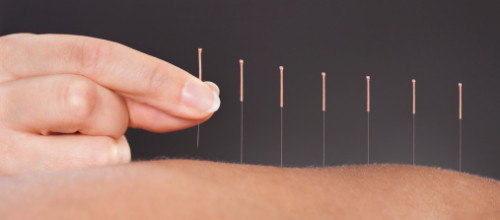
How Acupuncture Works
By: Michel Antoine Solounias, MS, L.Ac., LMT.
Wondering how acupuncture works? What is the explanation behind how and why acupuncture is effective at dealing with so many ailments?
Currently there are several coexisting explanations based on scientific research and traditional theory. The consensus is that acupuncture seems to positively influence health in several ways, acting as a great regulator for all body systems.
The over 2,500 year old understanding is that within the human body there are pathways of communication, which play a crucial role of keeping us all in balance or homeostasis. Most of us remember the term “homeostasis” from our introduction to biology as children in school. The idea of balance is at the center of Traditional Chinese Medicine (TCM). It is believed that all living things, including human beings, have a relationship with nature and our environments. So true health is to be in balance not only within ourselves, but also in relation to our environments.
When we experience illness in any form, it is believed to be a result of interference in the normal communication within our bodies. The pathways of communication, or channels in our bodies, have specific points mapped out on them, which act as doorways from the surface of the body to the internal anatomy and physiology. By stimulating certain points with either acupuncture, heat, or by hand, we can see regulating effects in our physiology and the state of our health, and the correction of the communication within. These forms of stimulation are chosen carefully based on the individual, with the end result being a regulating effect, promoting healing and homeostasis at any level of the human body.
Modern science has shown that acupuncture points have a different electrical output than non-acupuncture points on the body. But the most research has been in uncovering the effects on the body’s endogenous (made from within) opioids, and neurotransmitter function. Many studies have shown an increase in opioid concentrations within the central nervous system after acupuncture treatment. Opioids are in large part responsible for reducing and eliminating pain. Through this effect we also see increased immune system functioning.
Also, at the base of the human brain exists the hypothalamic-pituitary system, which is responsible for the release of neurotransmitters and certain key hormones including endorphins. When acupuncture is performed, it triggers several sensory receptors within the soft tissue of the body, which stimulate nerves to transmit signals and impulses to the hypothalamic-pituitary system. This results in a regulation of biochemical processes and promotes healthy bodily functions.
Another area in which modern science has uncovered some of the effects of acupuncture is neurology. Without getting overly technical, the basic findings were that acupuncture can regulate and reduce symptoms of pain by having an effect on the way nerves transmit pain signals. It was also shown that acupuncture activates certain areas of the brain, which control sensations of pain and pain threshold. Therefore, in people undergoing regular acupuncture care, pain thresholds are increased and symptoms decreased, allowing for better functioning and improved quality of life.
So far we can see the reason why so many people seek acupuncture for pain relief. However, there are many other equally powerful benefits of acupuncture. This type of treatment can also have effects on increasing fertility in women, regulating hormone function, improving athletic performance, regulating digestion and appetite, and controlling blood flow, which can help reduce and control inflammation, which is at the root of almost every disease known to man! This is all due to the regulating effect of acupuncture.
Yet with all we do know about acupuncture and how it works, there is still a need for more research to learn more about its usefulness and other possible effects. One of the biggest challenges to understanding the wonderful mechanisms of acupuncture is the fact that the points and pathways of acupuncture cannot be seen by the naked eye, at least not yet. But there are other signs that can be measured.
Every human being carries an electrical charge. Electricity under the control of our central nervous system is responsible for heart function, for example. Some researchers have found that upon measuring electrical output at the acupuncture points on the body, there is a significant difference from the output at non-acupuncture points. Also, we know in biomedicine that there are many functions within the body that depend on ion (charged particle) flow. The calcium ion concentration of acupuncture points has been measured to be significantly higher than that of non-acupuncture points. This has led to the speculation that calcium ion flux may be involved in the mechanism of action of acupuncture and its effects. And as we know, calcium plays a vital role in maintaining many of our bodily functions.
With these ideas we can see how the points and channels may not be tangible, or visible upon examination of the physical body.
Studies were also done where traditional acupuncture points were stimulated while a person underwent an fMRI (functional MRI). This type of MRI allows radiologists to view changes in the brain while the person is having the MRI. In the study, they found that the areas of the brain that were activated were directly related to the traditional 2,500-year-old explanation of the points.
So as we move forward through the timeline of Traditional Chinese Medicine (TCM) including acupuncture, and as we continue to observe its healing effects and uncover how it is working so well, we remain confident that this senior form of healthcare will continue to be a medically necessary, useful, safe and cost-effective system helping millions worldwide each year.
